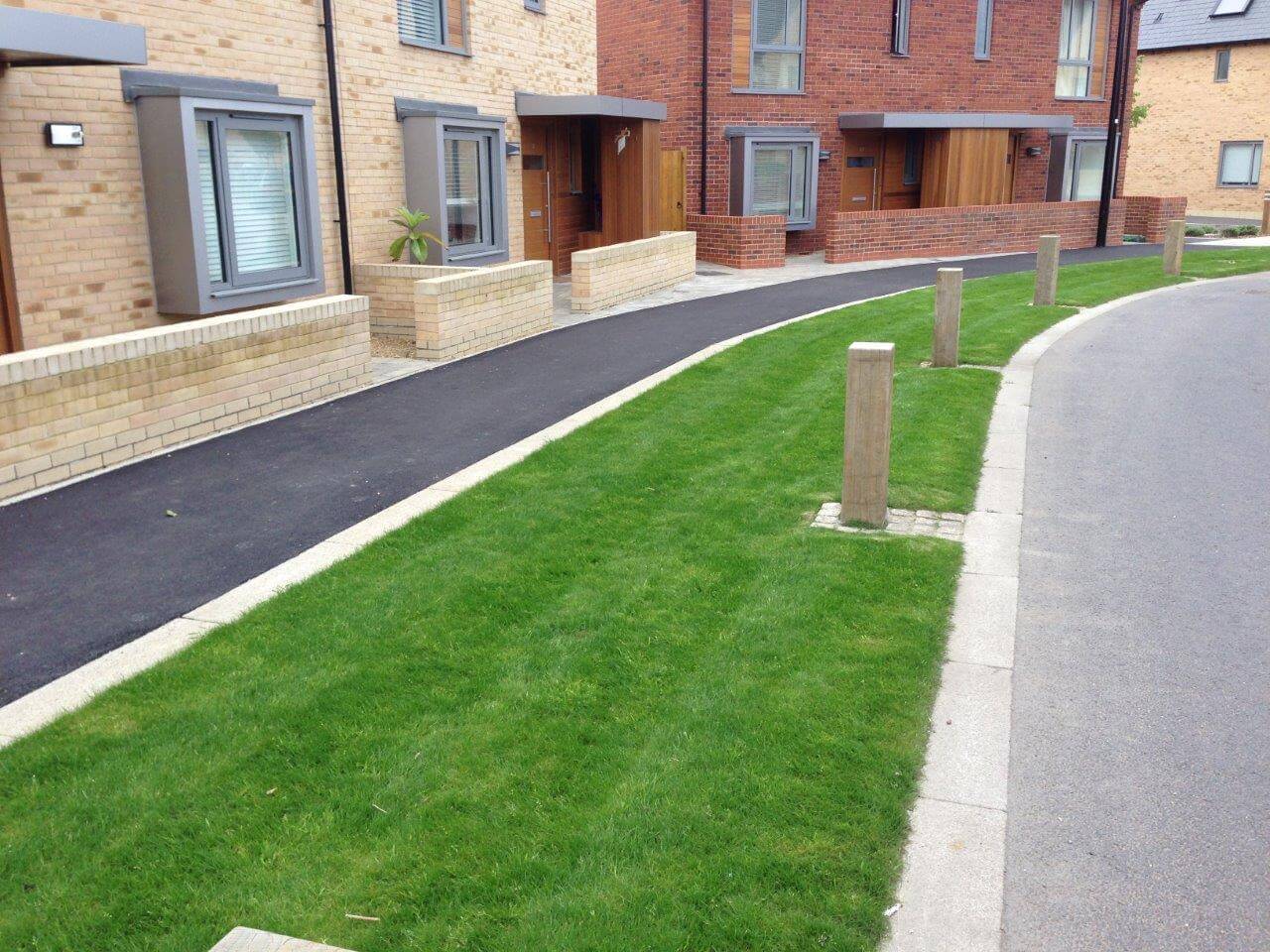In January 2023, Defra announced a decision to implement Schedule 3 of the Flood and Water Management Act 2010 in England. This will introduce a new framework and national standards for the approval and adoption of SuDS in England, and will make Unitary and County Councils SuDS Approving Bodies. The UK Government is currently considering how Schedule 3 will be implemented.
Non-Major and Minor developments
If you want to build a new house, or a development of up to nine new houses, you will need planning permission for non-major development. Alterations to homes and businesses is defined as minor development.
permission for non-major development. Alterations to homes and businesses is defined as minor development.
The impact of non-major and minor development on flood risk and surface water drainage issues is often underestimated. The successive growth of small developments within a catchment can have a large cumulative impact on surface water runoff rates and volumes, as well as flood risk on downstream communities.
There are many benefits to using SuDS rather than traditional drainage in your new development and it is strongly encouraged. SuDS may also help you to meet many other Local Plan policies for your development.
 What is Non-Major development?
What is Non-Major development?
‘Non-major development’ is any development falling below the threshold of major development. For example, a planning application for eight dwellings, an office building creating 750 square metres of floor space, or a development with a site area of 0.4 hectares.
 What is Minor development?
What is Minor development?
In relation to flood risk, “minor development” is defined within the Flood Risk and Coastal Change Guidance. In this context, minor development means:
- Minor non-residential extensions (industrial/commercial/leisure): with a floorspace of less than 250 square metres.
- Alterations: development that does not increase the size of buildings (e.g. alterations to external appearance).
- Householder development: for example, sheds, garages, games rooms etc. within the curtilage of the existing dwelling, in addition to physical extensions to the existing dwelling itself. This excludes creating a separate dwelling within the curtilage of the existing dwelling (e.g. subdividing houses into flats).
Cumulative impacts of development
The cumulative impact of development should be considered at the planning application and development design stages and the appropriate mitigation measures undertaken to ensure flood risk is not exacerbated, and where possible the development should be used to improve flood risk.
Some of the former district councils within Somerset have developed specific policies to manage the cumulative impacts of minor and non-minor development at planning application stage, informed by a Cumulative Impact Assessment. In the case of the Mendip area, a tiered approach has been adopted, with bespoke policy applied, depending on the location of the development.
The North and Mid Somerset Catchment Flood Management Plan notes that in areas of high surface water flood risk, particularly where cumulative impacts are high, that re-development of land should be discouraged in favour of relocation. This is to limit the intensification of development in areas with a high risk of flooding.
Standing advice
The expectation is that all developments in Somerset should aim to include high quality SuDS and provide some form of betterment to existing conditions. The inclusion of SuDS has many benefits and will also help to meet many other local policies.
Applicants are required to provide Somerset Council, as Local Planning Authority, with a surface water drainage management plan which demonstrates how surface water from the development will be disposed of in a manner that does not increase flood risk elsewhere, in accordance with the principles of SuDS. The applicant is advised to refer to the Somerset local SuDS design standards, particularly those relating to water quantity (L1 to L9). To achieve this, we recommend the inclusion of source control components (such as rainwater re-use/harvesting, green roofs, rain gardens, trees, permeable paving). Existing flow routes and drainage features within the site should be identified and preserved (e.g. ditches, seasonally dry watercourses, historic ponds).
Surface water drainage should also aim to enhance the water quality, biodiversity, climate change resilience and amenity of the site. Clear justification and evidence are required to prove that inclusion of SuDS within non-major or minor development is “not reasonably practicable.” Reasonably practicable is defined in the NPPG for Flood Risk and Coastal Change as referring to the Defra SuDS Non-Statutory Technical Standards, and should take into account design and construction costs, including the opportunity costs of providing land for drainage components and the maintenance and operating costs.
Applicants are advised to refer to the Somerset local SuDS design standards, and to fill in a Non-Major and Minor Development Checklist and submit it along with their application. 

